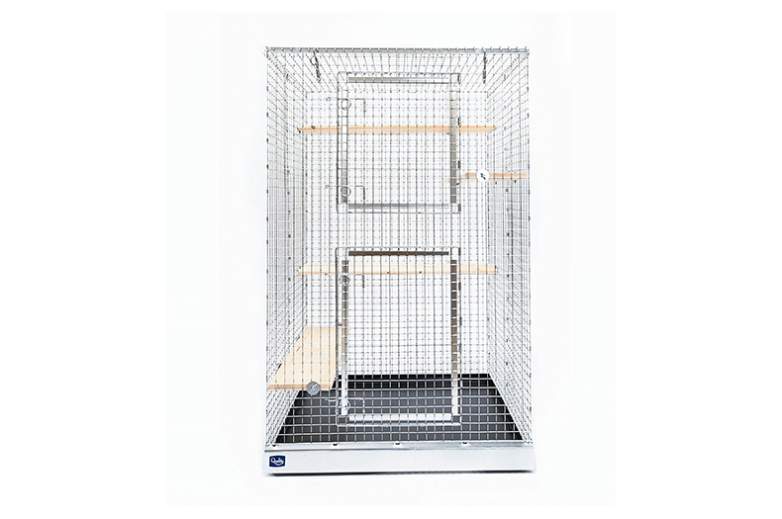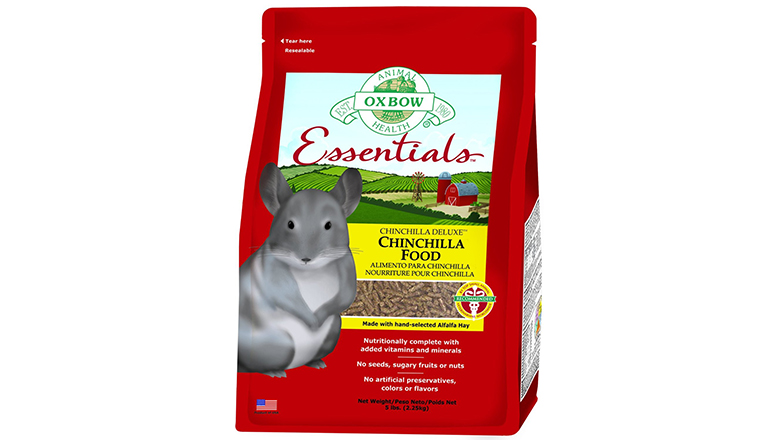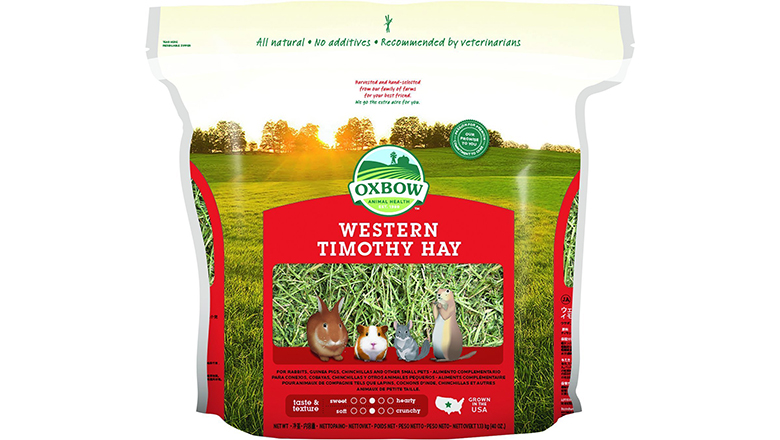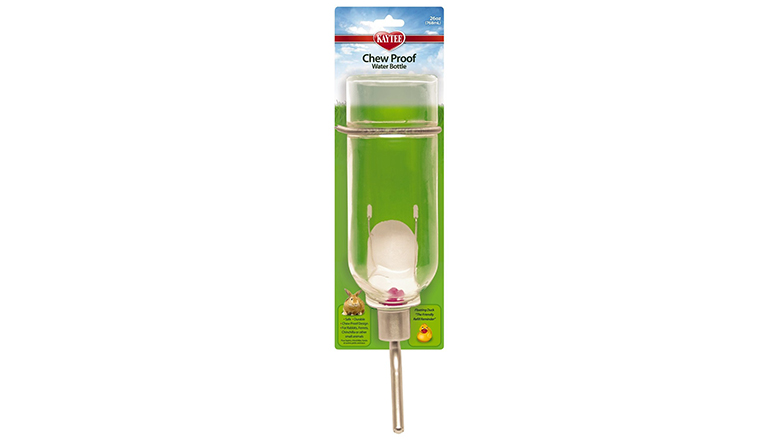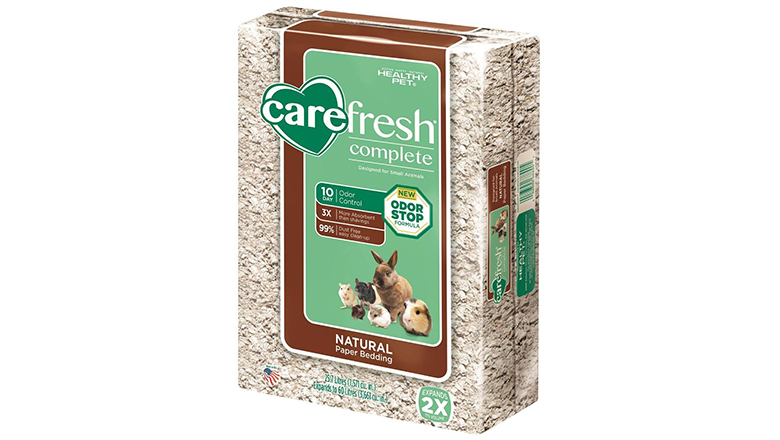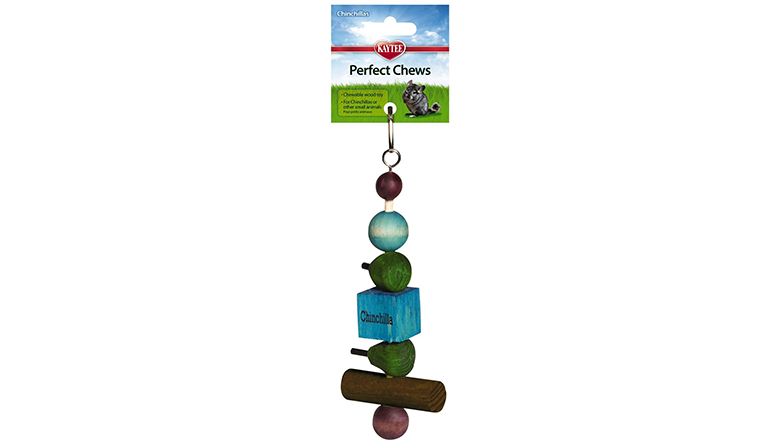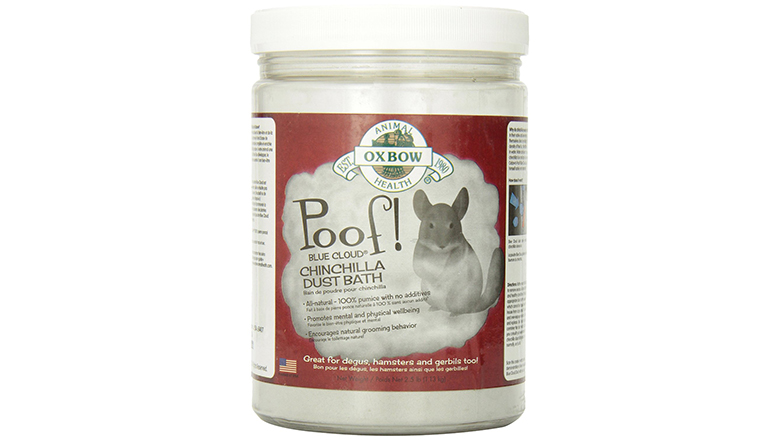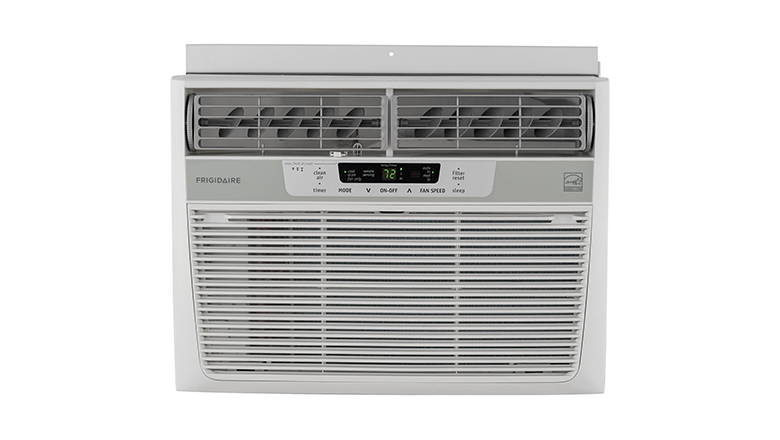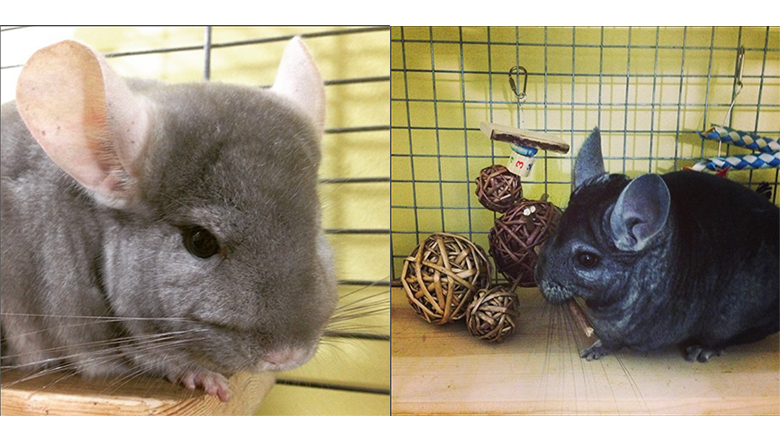
When I tell people that I have chinchillas, most folks have no idea what they are. Their first question is usually, “Is that like a ferret?”
Instead, chinchillas are crepuscular rodents about the size of a small rabbit or a large squirrel. They have bottle-brush tails, kangaroo legs, and huge ears and whiskers. The two in the image above are mine — that’s Spirit on the left and Specter on the right. Specter is ten, so I’ve had chinchillas for over a decade now. They’re adorable little troublemakers and I absolutely love having them as pets.
If you’re considering getting your first chinchilla, you should know that they have very specific requirements. They’re not necessarily difficult animals to keep, but a few poor choices could seriously affect the health of your pet.
Over the years, I’ve tried lots of different products and while it varies from chinchilla to chinchilla, there are several tried-and-true products that every owner should try. A properly weaned baby chinchilla won’t have different needs, so once you make a few key choices, you’ll know what to get for their whole lives.
One important note: treats aren’t on this list. For the most part, chinchillas don’t need treats. They cannot process sugar at all, so any treat with sugar should be avoided altogether. I keep some willow sticks on hand to reward my chins for behaving themselves. If you absolutely must give your chinchillas treats, you can give them sugar free shredded wheat or dried rose hips — limit one per day at the very most, though.
Here’s our guide to the ten most essential chinchilla items including the best cages, food and accessories to help prepare you for bringing your furball home.
1. Best Chinchilla Cage: Quality Cage Co. Chinchilla Mansion
The very first thing you need, of course, is a cage. Chinchillas will chew everything in your house to their own peril, so they can’t really be allowed to free roam except in small, controlled areas. In the wild, chinchillas live in the Andes mountains, at high altitude and often in rocky, cliff-side burrows. What this means for the domestic chinchilla is that they need height.
They prefer to occupy vertical space rather than horizontal. Rabbit and guinea pig cages will not work in this case — you must have a tall cage. Some bird cages will work, provided they have heavy-duty bars, while ferret cages could work if they have no plastic whatsoever in them.
Chinchillas need solid flooring because of the shape of their feet, preferably made of wood or metal. Slotted bars also won’t work and will hurt them. While the bottom of the cage should be covered with bedding (we’ll get to that), other shelves and ramps should either be solid or removed in favor of wooden ledges. Chinchillas can have a three-foot vertical leap, so you don’t need ramps as you do with other critters.
If you opt for a cage with plastic shelves, remove all of them and replace them with wooden shelves and platforms at varying heights around the cage. Lava ledges are also a good alternative and provide another chewing surface. It’s a little bit of a pain to set up the first time, but well worth it for a happy chin.
Without a doubt, the best cage is made by Quality Cage Co. Their mansion model is the absolute best cage you can buy. Both of my chins have their own mansion on ten inch stands. Yep, that’s two five-foot monstrosities for creatures that weigh about a pound each. Another option is the MidWest Critter Nation, but only if you remove the plastic and the ramps and replace them with wood.
Buy the Quality Cage Co. Chinchilla Mansion here.
2. Best Chinchilla Food: Oxbow Deluxe Chinchilla Food
Chinchillas have a very sensitive digestive tract. They don’t tolerate change well, but the flip side of that is that they can get all the nutrition they need from two sources. The first is pellet-based food. An alfalfa-based pellet provides the perfect level of protein and fiber necessary for chinchilla health. They have very, very fast metabolism and require lots of fiber to keep their systems moving.
Keep their pellet food no-frills. Don’t buy anything that has additional bits in it — your chinchilla doesn’t need them and they can lead to any number of health issues. Oxbow Deluxe Chinchilla Food is an excellent choice. They have consistent batches unlike many other brands, and all you get is the pellets themselves.
Another option would be Mazuri, which is what I feed my chins. Some folks have success with Purina Advanced Nutrition Rabbit (usually referred to as PANR in forums), but in some cases, it can be hard to come by and the batches aren’t always consistent.
You’ll also need a metal dish to serve the pellets in. You can try freestanding ones, even porcelain, but I find that my chins like it best when it hangs from the side of the cage. If you find that your chinchilla is a bit of a terror, consider one that attaches securely.
Price: $11.49 for a five-pound bag
Buy Oxbow Deluxe Chinchilla Food here.
3. Best Chinchilla Hay: Oxbow Western Timothy Hay
The second source of chinchilla nutrients is hay. It is absolutely required that your chinchilla always have access to a large amount of hay, 24 hours a day. For one thing, they tend to be picky about which stalks they’ll eat, so they’ll waste quite a lot of it. For another, the fiber from the hay keeps them from getting bloat, while the act of chewing keeps their molars safe from malocclusion. Both of these conditions will eventually kill a chinchilla.
In order for your chin to get all the nutrients they need, the primary hay should be timothy. Again, Oxbow Western Timothy is a great choice. Kaytee is an okay choice, too, and is a little cheaper. My two don’t much care for it, though.
As long as you provide ample timothy, you can also give your chins other flavors, like orchard grass or oat hay as a treat. Don’t mix it with the timothy and don’t feed it all the time. If your chins prefer the treat grass, they might not eat the timothy enough, which is providing the right amount of calcium. Also, skip the alfalfa hay since they’re already getting that from their pellets.
You’ll need a hay feeder, too. Stay away from plastic, obviously — all chewing creatures can break up plastic into bits, which can lead to a deadly blockage. You can also use a hay ball for treat hays.
Price: $10.19 for 40oz
Buy Oxbow Western Timothy Hay here.
4. Best Chinchilla Water Bottle: Super Pet Small Animal Chew-Proof Water Bottle
Like hay, your chinchilla needs constant access to water. And like everything else, the bottle cannot be made of plastic. There used to be a few really good options for this, but now the only real game in town anymore is the Kaytee Super Pet glass chew-proof bottle. It’s cheap and it works. Try any bottle you like, as long as it’s not made of something they can destroy and it doesn’t leak. Chinchilla fur is very dense, so a leaky bottle might mean that your pet gets wet, which will quickly lead to fungus and fur rot.
Price: $5.99 (43 percent off MSRP)
Buy the Super Pet Small Animal Chew-Proof Water Bottle here.
5. Best Chinchilla Bedding: Carefresh Complete Pet Bedding
Naturally, the floor of your chinchilla’s cage should be both soft and forgiving of pee. You have two main options here. The one I favor is covering the whole bottom of the cage using a fleece liner with hidden seams. This you’ll need to make yourself, using fleece from a fabric store. Don’t let any threads show or your chinchilla will chew them and possibly eat them, which could lead to a blockage. This is also true of any fabric that isn’t fleece. Fleece is the only acceptable fabric for a chinchilla cage.
If you go that route, get a small, low Pyrex dish and fill it with disposable bedding so your chinnie has a place to pee. They prefer to pick a corner or two to do their business, and this way you’ll be able to change it more regularly than the liner.
That disposable bedding could also work instead of the fleece liner. For this, there is no better option than Carefresh. Use the recycled paper variety, as it’s generally safer and has far superior odor controlling power.
That being said, as a commenter notes, some chinchillas will chew this which could lead to a blockage. Mine never have, but it’s certainly in the realm of possibility. You can use pine bedding in place of a recycled paper solution, but no other woods. Especially avoid cedar, which has volatile oils that could irritate your chin’s airways.
Price: $21.99 for 60L
Buy Carefresh Complete Pet Bedding here.
6. Best Chinchilla House: Super Pet Woodland Get-A-Way
While some chinchillas are content to sleep on high ledges, it’s still important to provide a dark hiding spot. They sleep during the day and even most of the night, being most active at dawn and dusk. They like to have a safe spot to go where they know they can’t be bothered from behind. A large wooden house serves this purpose best. Both of my chins like the Super Pet Woodland Get-A-Way, extra large size.
You also can make a tunnel out of these Super Pet Fiddle Sticks to serve as a dark safe place. Try both and see which your chinchilla prefers.
Price: $14.99 (28 percent off MSRP)
Buy the Super Pet Woodland Get-A-Way here.
7. Best Chinchilla Toys: Kaytee Perfect Chews for Chinchillas
Your chinchilla needs two types of toy: 1. chews, 2. an exercise wheel. Neither of these are negotiable. The wooden chews are required to keep their constantly-growing rodent teeth trimmed properly, while the wheel provides unlimited exercise. Chinchillas are very fast runners and need to be provided the opportunity to run as much and as fast as possible.
Chinchillas are unique in that the shape of their spines means they need a certain type of wheel. You can buy very large traditional wheels that won’t stress their back, but this isn’t the best option. The very best design is the metal flying saucer wheel. Their site isn’t much to look at, but this design allows for maximum chinchilla top speed in the most comfortable position. They also last forever. There’s a cheaper version that isn’t quite as good, but may work for you, anyway.
Chews, on the other hand, are numerous and varied. The typical kebab style toy is great, and you should put two or three in your chinchilla’s cage. Try all sorts of things. My chinnies really love willow-based toys, but yours might prefer loofah. Keep toys to metal, hardwood, loofah, willow, and lava block materials. Don’t stray too far away from those or you risk your pet’s health, but provide as many fun games and textures as you can within those constraints.
Warning: Do not buy the oversized hamster balls for chinchillas. They’re much too sensitive to heat and there are plenty of accounts of chins getting heat stroke from running around in them.
Buy the Kaytee Perfect Chews for Chinchillas here.
8. Best Chinchilla Bath Dust: Oxbow Animal Health Poof Blue Cloud Dust
Probably the best part of owning a chinchilla is watching them take a dust bath. It never gets old. They’re like little, furry tornadoes. Dust baths are essential to chinchilla health. Because of their dense fur, they cannot bathe in water lest they get a fungus that rots their fur and destroys their delicate coat. Their natural skin oils keep them clean for the most part, but two or three times a week, they must get a dust bath to remove the oil.
The best dust on the market is Blue Cloud, which you can get from Oxbow. It’s very finely ground pumice that will keep your chin’s coat show-ready. Do not buy bath sand, though — the granules are much too coarse and will damage their very fine fur.
You’ll need a vessel to bathe them in, as well. A small kitty litter box works very well, but will let them kick a lot of dust into the air and all over the room. The Kaytee Bath House is a good alternative that will trap some of the dust. Don’t buy the smaller, porcelain model shaped like a chinchilla, however. The chamber isn’t nearly large enough and your chinchilla could hurt its back trying to roll around in it.
Price: $13.99
Buy Oxbow Animal Health Poof Blue Cloud Dust here.
9. Other Chinchilla Accessories: Air Conditioning
You might not think of this as essential chinchilla gear, but if you live in an area where temperatures get over 75 degrees (F) and your building doesn’t have AC, you’re going to need to look into one of these units. Chinchillas only regulate their body heat via their paper-thin ears and their feet. If the room your chinchillas live in gets hot, they are at significant risk of suffering heat stroke.
They heavily favor temperatures between 60 and 65, so having air conditioning will help regulate that through the hot months. I recommend a 10,000 BTU or higher unit. If your room is very small, you might be able to get away with less, but I’ve never risked it.
In addition to keeping the room cool, you can also provide your chinchilla a cool place to hang out in their cage to help them manage their temperature. A slab of granite, known as a chin-chiller will give them a comfortable place to sit.
I can’t stress this point enough. Heat stroke will kill your chinchilla, so you have to do what you can to monitor and maintain the temperature in their room. Since you can’t be there every second of every day, I recommend getting a thermometer that can alert you via app if the temperature gets too high like the La Crosse Alerts Mobile 926-25101-GP Wireless Monitor System Set here. I’ve had a few scares myself during power outages, so I can attest to how useful this can be.
Price: $310.95 (9 percent off MSRP)
Buy the Frigidaire 10,000 BTU 115V Window-Mounted Compact Air Conditioner with Temperature Sensing Remote Control here.
10. Other Chinchilla Accessories: Dr. Naylor Blu-Kote Antiseptic Spray
While rodents are, by and large, wonderful healers, when kept in captivity they require a little bit of special care when they get injured. Whether your chin is in recovery or you’re waiting for the exotic vet to open so they can address a wound, Blu-Kote will keep any open wounds clean to prevent infection.
I especially recommend this if you have more than one chinchilla, since it’s not unheard of even for long-time cagemates to randomly turn on one another. I keep my two in separate cages and offer them separate out-of-cage time and yet, we still had one incident where one clambered up the side of the other’s cage and latched onto a paw. Blu-Kote kept the wound safe until we could get her to the vet. Strongly recommended.
Price: $11.74
Buy the Dr. Naylor Blu-Kote Antiseptic Spray here.
See Also:
- Best Hamster, Gerbil, & Mouse Cages
- Best Fish Tank Kits
- Best Bearded Dragon Tank, Food, & Accessories
